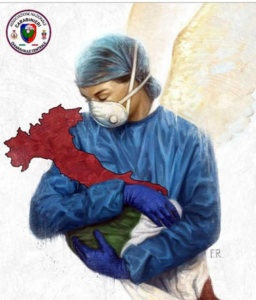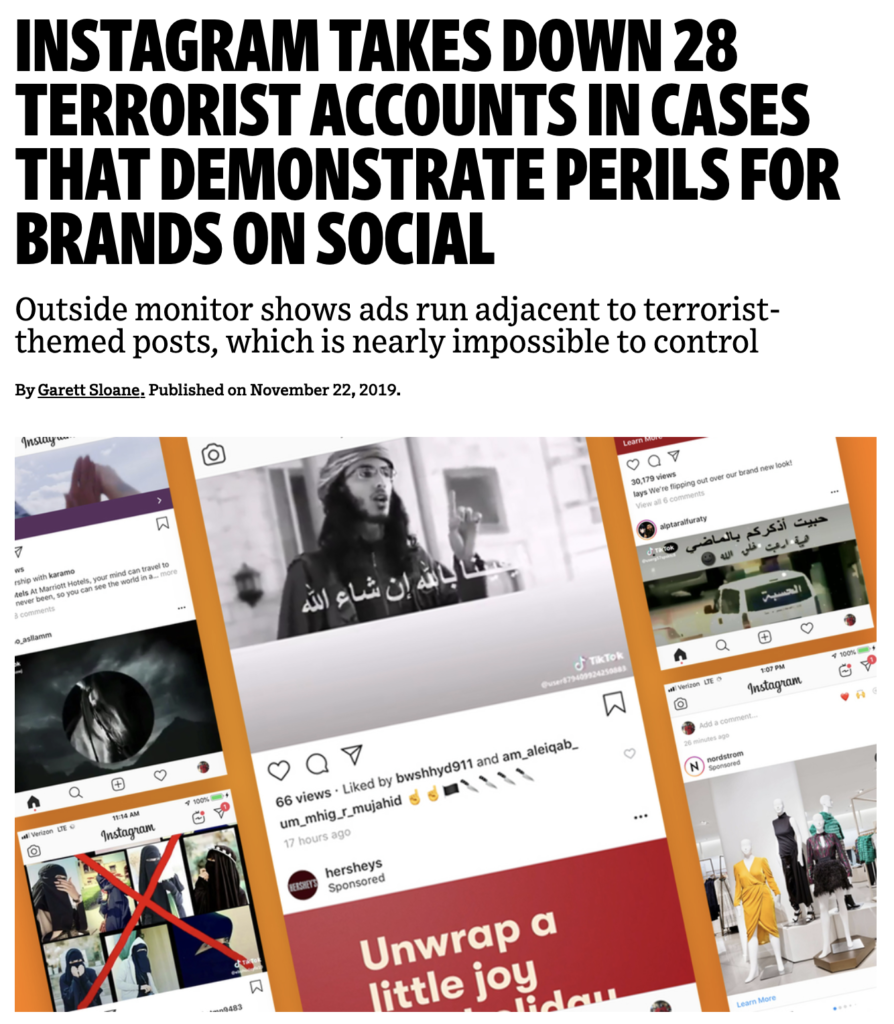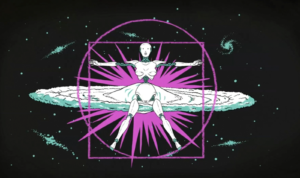Instagram – a utopia or dystopia?
Inspired by today’s lecturers, Massimo Warglien, Costanza Sartoris & Simon Denny, this blog post will take on a different perspective on Instagram’s role during COVID-19 and in life in general. The focus goes beyond the intended and unintended usage ways only, towards a view on Instagram’s potential for the future as well. But let’s start with the COVID-19 situation first before we move on!
Do you feel observed on Instagram?
Today, we wanted to stop seeing and analysing Instagram from our perspective only, but wanted to find out how the user feels about Instagram usage during COVID-19. The increased Instagram usage during COVID-19 goes along with the increased transparency of everyone’s life on the platform. Everyone posts private pictures and insight about their lockdown experiences and social distanced lives. However, this transparency can also be used to be observed, controlled and monitored by the social environment to check whether the rules of the government are respected or not. This is why we asked our friends on Instagram how they feel about the instagram usage during COVID-19 and these are the answers of our italian, danish, and swiss friends:

Even though most of the participants did not feel more observed on Instagram during COVID-19 Pandemic, there are 85/239 participants, which do feel observed. However, this survey can not be done anonymously, so we think that there could be some answers among the “No”, which are socially desired instead of reflecting the real experiences. So the hidden numbers might be even higher. This finding indicates that the happenings around COVID-19 may have an impact on the way certain people interact on the platform and the way they present themselves or use tags on Instagram. But how?
The use of “Stay home”: a help or a trend?
The 21st of March Instagram launched a “stay home” function in order to encourage users to stay home during Covid-19 pandemic. As Instagram wrote, the intention of this “sticker” was to allow users to share their photos or videos in a “shared Instagram story”, in which people can see how they are staying home and staying safe.

Paul “BizPaul” Ince, founder of the UK based digital marketing agency Likemind Media, was one of the first to try this function; he pointed out that it is fundamental that everyone helps spread the message because people are not listening and taking seriously the necessity to stay home in this crisis. In this sense, the mentality is that people need to see others they know doing the right thing. Nevertheless, the general impression was that this technology is being used in a way it was not intended. In fact, a lot of different users use this function just to show that they are following the rules, capturing a moment in which they are at home but, in reality, in other moments of the day, they might do the exact opposite. In this way, the original intention of Instagram is transformed in a trend of sharing the proof of respecting social distance but just for posting and not for the real intention of being responsible. However, even if this function may have been used “not as intended” there are other COVID-19 related functions, which exceeded expectations as the following paragraph will show.
Crowdfunding promotion: how Instagram can help to sustain charity initiatives
 Mainly during the last months we attended a lot of charity initiatives. In all over the world a lot of people donate money in order to sustain healthcare systems and states to face Covid-19. Some of these charity initiatives have been promoted on Instagram. Many actors, singers, companies, influencers have started crowdfunding initiatives for charitable purposes. Thanks to these projects there were built hospital wards, there were bought sanitary materials and were sustained spending on additional medical staff. How was this possible? It is very simple. By a photo, by a story, by a live stream. We attended how some Instagram functions were employed for public healthcare. We have had the possibility to see how through a single photo or video it had been possible to build new intensive therapies, rather than new ventilators for hospitals. These initiatives, on the other hand, have demonstrated that facing common difficulties people support themselves overwhelming them.
Mainly during the last months we attended a lot of charity initiatives. In all over the world a lot of people donate money in order to sustain healthcare systems and states to face Covid-19. Some of these charity initiatives have been promoted on Instagram. Many actors, singers, companies, influencers have started crowdfunding initiatives for charitable purposes. Thanks to these projects there were built hospital wards, there were bought sanitary materials and were sustained spending on additional medical staff. How was this possible? It is very simple. By a photo, by a story, by a live stream. We attended how some Instagram functions were employed for public healthcare. We have had the possibility to see how through a single photo or video it had been possible to build new intensive therapies, rather than new ventilators for hospitals. These initiatives, on the other hand, have demonstrated that facing common difficulties people support themselves overwhelming them.
Let’s think about how it has become much easier, in comparison to the past decades, supporting charity initiatives. Now, throughout a few clicks, we can donate as much as we want. In Italy, for example, many famous people, such as the designer Giorgio Armani, have supported charitable initiatives supporting doctors, nurses, hospitals against covid-19 even through the use of instagram. The key image of this campaign, promoted on almost all social media, has become a doctor who holds Italy in her arms. However, as we are going to see later, there is a much darker side of Instagram we might have never thought about.
The unintended evil side of instagram
The first thing that came into our mind when thinking of evil are Terrorists. These kinds of organized groups can unconsciously influence people’s political and religious beliefs over platforms like Instagram. Through likes, comments and other interactions users may be led towards certain shady pages, which may increase the likeliness of attracting users into such organizations and getting in contact with them.
Instagram is attempting to restrict these kinds of movements by monitoring content on certain profiles and by reporting those to the authorities (see picture below). However, certain bad intentions are over Instagram’s control and can lead to parallel networks, the social platform has no direct access to.

(Retrieved from Instagram terms and conditions)

(Retrieved from Ad Age – November 22, 2019)
But these are only the things we can imagine of today. That is why we started to think about what could be future developments of platforms like Instagram.
Instagram – a utopia or dystopia?
New technological achievements not only bring advantages but also dangers. Many fear a “dehumanization” and the loss of their own individuality through the virtual business with the data. Therefore it is important to think about possible utopias and dystopias.
What could future functions and influences from Instagram look like?
The online world is increasingly determined by the number of clicks, likes and interactions. But what if there will soon no longer be an offline world and we are permanently online? As already shown in the Netflix series Black Mirror in 2016, a utopia could be that likes, shares and reviews completely determine our lives and become a kind of currency that determines the socio-economic value or status of a person.
 (“Nosedive”, 2016. 8flix.com)
(“Nosedive”, 2016. 8flix.com)

(“Homo Digitalis”, 2018. InnoVisions.com)
Adaptive avatars and holograms are already responding to our emotional needs today and increasingly in the future, robots make everyday life easier for us and even serve as sex partners. We strive to become smarter and more durable through technologies: But what does all this do to us as humans? The consequences of digitization and its often-associated social isolation can already be seen in Japan, for example. People develop fear of real human interaction, robots take on human functions, “friends” can be rented by hour, fictional characters are loved, and holograms are married. We are continuously developing from Homo Sapiens to Homo Digitalis.
In addition to topics like high automation, digitization and increasing networking, we will also deal heavily with the handling and analysis of large amounts of data in the future. Chat services, such as Wechat in China, continue to develop and offer users the option of new payment methods and ID-cards that can be connected to your social media accounts – and therefore have more and more data. In addition, the manipulation of i.e. knowledge, information sources, image and video material or news are no longer visions of the future. But who knows, maybe Trump’s election and Brexit were just the beginning?
Share your thoughts with us about future developments of Instagram by commenting below!
Aurora De Martin, Emaele de Quatrebarbes, Lara Schulte, Marco Ubalducci & Selma Vuckic